Simulations Publications, Inc. (SPI) was an American publisher of board wargames and related magazines, particularly its flagship Strategy & Tactics, in the 1970s and early 1980s. It produced an enormous number of games and introduced innovative practices, changing the course of the wargaming hobby in its bid to take control of the hobby away from then-dominant Avalon Hill. SPI ran out of cash in early 1982 when TSR called in a loan secured by SPI's assets. TSR began selling SPI's inventory in 1982, but later acquired the company's trademarks and copyrights in 1983 and continued a form of the operation until 1987.
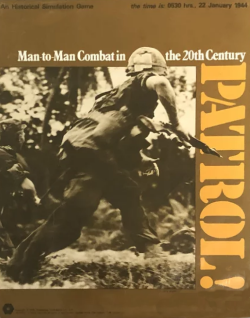
Patrol, subtitled "Man to Man Combat in the 20th Century", is a skirmish-level board wargame published by Simulations Publications Inc. (SPI) in 1974 as a sequel to Sniper!, which had been released the previous year. Whereas Sniper! was set in urban environments during the Second World War, Patrol is set in a non-urban environment, in various conflicts ranging from 1914 to 1970.

Richard Harvey Berg was a prolific American wargame designer. He was inducted into the Charles Roberts Awards Hall of Fame in 1987.
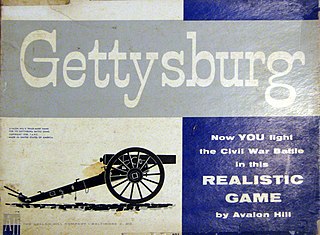
Gettysburg is a board wargame produced by Avalon Hill in 1958 that re-enacts the American Civil War battle of Gettysburg. The game rules were groundbreaking in several respects, and the game, revised several times, was a bestseller for Avalon Hill for several decades.

A board wargame is a wargame with a set playing surface or board, as opposed to being played on a computer or in a more free-form playing area as in miniatures games. The modern, commercial wargaming hobby developed in 1954 following the publication and commercial success of Tactics. The board wargaming hobby continues to enjoy a sizeable following, with a number of game publishers and gaming conventions dedicated to the hobby both in the English-speaking world and further afield.

Armageddon: Tactical Combat, 3000-500 BC is a board wargame first published by Simulations Publications Inc. (SPI) in 1972 in Strategy & Tactics, then released as a stand-alone game, then reimplemented as Chariot: Tactical Warfare in the "Biblical" Age, 3000-500 BC.
Linda D. Mosca was the first commercially published female board wargame designer. In the mid-1970s, when the wargame industry was dominated by men, she was the only woman employed in a creative role.
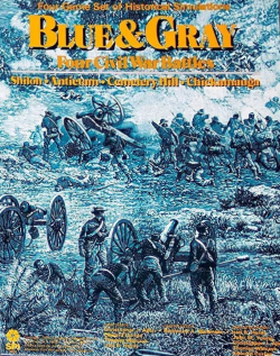
Blue & Gray: Four American Civil War Battles is a board wargame originally published by Simulations Publications, Inc. (SPI) in 1975 that simulates four battles from the American Civil War.
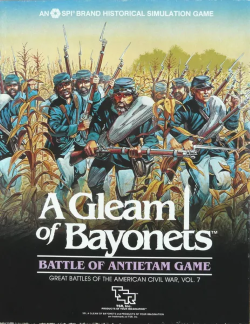
A Gleam of Bayonets: The Battle of Antietam is a board wargame published by the Simulations Publications, Inc. (SPI) subsidiary of TSR in 1983 that is based on the American Civil War Battle of Antietam.
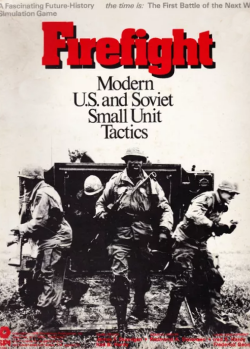
Firefight: Modern U.S. and Soviet Small Unit Tactics is a tactical wargame originally published by Simulations Publications, Inc. (SPI) in 1976 that hypothesizes combat between small units of American and Soviet forces in West Germany in the 1970s.
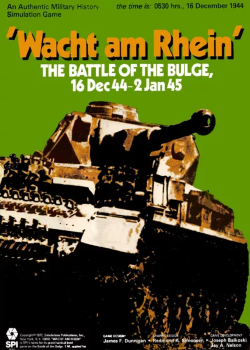
Wacht am Rhein is a grand tactical monster board wargame published by Simulations Publications, Inc. (SPI) in 1977 that simulates Germany's Battle of the Bulge offensive in late 1944 during World War II.

Lee Moves North, originally titled Lee at Gettysburg and subtitled "The Confederate Summer Offensive, 1862 & 1863", is a board wargame published by Simulations Publications Inc. (SPI) in 1972 that simulates Robert E. Lee's summer offenses of 1862 and 1863 during the American Civil War

MechWar '77, subtitled "Tactical Armored Combat in the 1970s", is a board wargame published by Simulations Publications Inc. (SPI) in 1975 that simulates hypothetical tank combat in the mid-1970s between various adversaries, using the same rules system as the previously published Panzer '44.

Musket & Pike, subtitled "Tactical Combat, 1550-1680", is a board wargame published by Simulations Publications Inc. (SPI) in 1973 that simulates combat in Europe during the transition from edged weapons to firearms in the 16th and 17th centuries.
Tsushima is a board wargame published by Game Designers' Workshop (GDW) in 1975 that simulates naval battles during the Russo-Japanese War of 1904-1905. Tsushima was part of a two-game collection titled The Russo-Japanese War. The second game in the box was Port Arthur, which covered the land combat during the war. The two games could either be played separately, or combined into one master game.
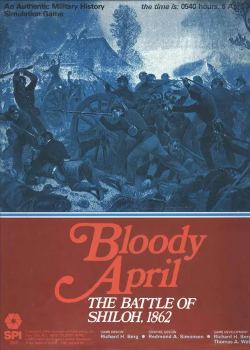
Bloody April: The Battle of Shiloh, 1862 is a board wargame published by Simulations Publications Inc. (SPI) in 1979 that simulates the Battle of Shiloh during the American Civil War. A revised edition published in 2022 by GMT Games became the 8th installment of the ongoing "Great Battles of the American Civil War" series.
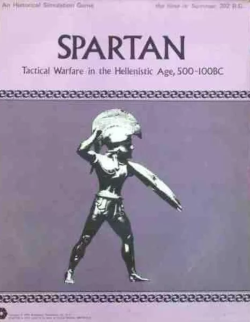
Spartan: Tactical Warfare in the Hellenistic Age, 500-100BC is a board wargame published by Simulations Publications, Inc. (SPI) in 1975 that simulates battles during the rise of Greece to the period of Roman rule. Originally published by SPI as Phalanx, the game was revised and republished with the title Spartan as part of a series called PRESTAGS.
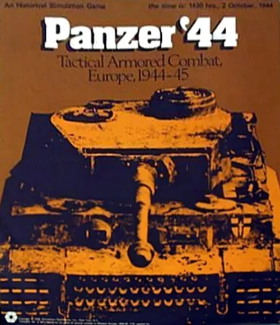
Panzer '44: Tactical Combat in Western Europe, 1944–45 is a board wargame published by Simulations Publications Inc. (SPI) in 1975 that simulates historical tank combat during World War II.

The 20th Maine, subtitled "The Battle for Little Round Top", is a board wargame published by Operational Studies Group (OSG) in 1979 that simulates the battle for possession of a hill called Little Round Top that anchored the left flank of the Union Army on the second day of the Battle of Gettysburg during the American Civil War. The game was republished by Avalon Hill in 1982 and titled Little Round Top.

Rifle & Saber: Tactical Combat 1850–1900 is a board wargame published by Simulations Publiucations Inc. (SPI) in 1973 that simulates at a tactical level various battles and skirmishes from the mid-19th century to the dawn of the 20th century. Although popular for a time due to its simple rules and many scenarios, it did not receive critical acclaim, and quickly fell out of favor as better wargames appeared on the market.
















